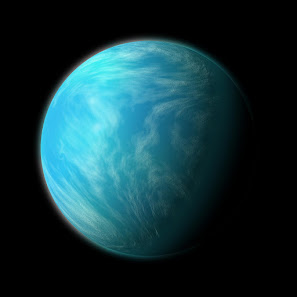KEPLER 22B
Kepler-22b orbits a star similar to our own sun, but it is slightly smaller and cooler. It takes approximately 290 days for Kepler-22b to complete one orbit around its star, which is roughly the same amount of time it takes for Earth to orbit the sun. The planet's size is approximately 2.4 times that of Earth, and its surface temperature is estimated to be around 22 degrees Celsius (72 degrees Fahrenheit), which is similar to the temperature on Earth.
One of the most significant aspects of Kepler-22b is its location within the habitable zone of its star. This means that it receives a similar amount of energy from its star as Earth does from the sun, and its surface temperature is within the range that is suitable for liquid water to exist. The presence of liquid water is one of the key indicators of habitability, as it is essential for life as we know it. However, it is important to note that just because a planet is in the habitable zone, it does not necessarily mean that it has the conditions required to support life.
Despite the excitement surrounding the discovery of Kepler-22b, there is still much that we do not know about this planet. Its exact composition is unknown, and we are not sure whether it has an atmosphere or not. Without this information, it is difficult to determine whether Kepler-22b could support life as we know it.
There are several methods that astronomers use to try and determine the composition of exoplanets, including measuring their mass and radius, and studying the light that passes through their atmosphere as they pass in front of their star. These techniques have been used to learn more about other exoplanets, but they are not foolproof, and there is always a margin of error.
In conclusion, Kepler-22b is an exoplanet located within the habitable zone of its star, which means that it has the potential to support life. However, there is still much that we do not know about this planet, and further research is needed to determine its exact composition and whether it could support life as we know it. The discovery of Kepler-22b is a significant step in our search for habitable planets outside our solar system and provides a glimpse into the possibility of life elsewhere in the universe.



Comments
Post a Comment